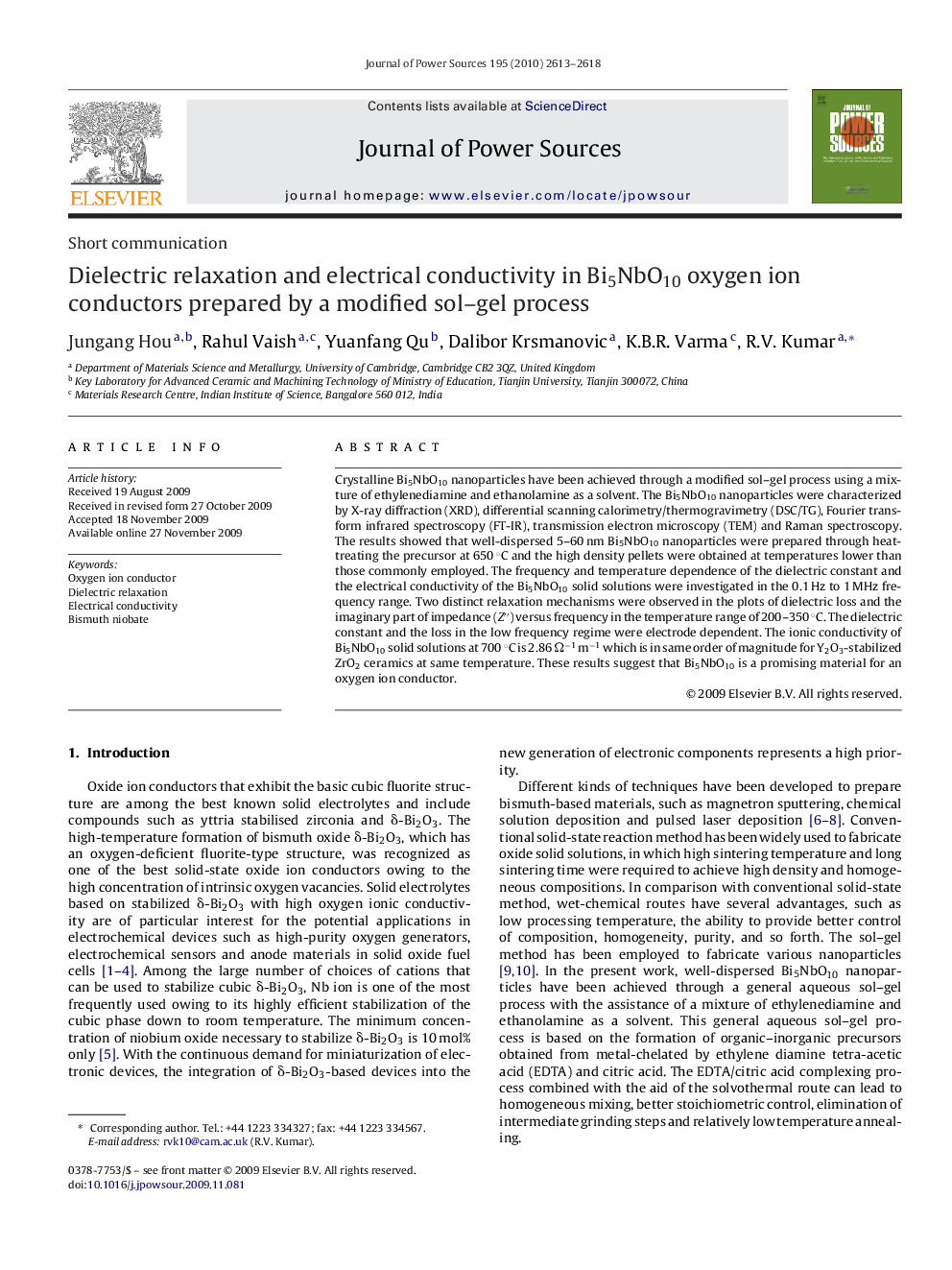| Article ID | Journal | Published Year | Pages | File Type |
|---|---|---|---|---|
| 1285009 | Journal of Power Sources | 2010 | 6 Pages |
Abstract
Crystalline Bi5NbO10 nanoparticles have been achieved through a modified sol-gel process using a mixture of ethylenediamine and ethanolamine as a solvent. The Bi5NbO10 nanoparticles were characterized by X-ray diffraction (XRD), differential scanning calorimetry/thermogravimetry (DSC/TG), Fourier transform infrared spectroscopy (FT-IR), transmission electron microscopy (TEM) and Raman spectroscopy. The results showed that well-dispersed 5-60 nm Bi5NbO10 nanoparticles were prepared through heat-treating the precursor at 650 °C and the high density pellets were obtained at temperatures lower than those commonly employed. The frequency and temperature dependence of the dielectric constant and the electrical conductivity of the Bi5NbO10 solid solutions were investigated in the 0.1 Hz to 1 MHz frequency range. Two distinct relaxation mechanisms were observed in the plots of dielectric loss and the imaginary part of impedance (Zâ³) versus frequency in the temperature range of 200-350 °C. The dielectric constant and the loss in the low frequency regime were electrode dependent. The ionic conductivity of Bi5NbO10 solid solutions at 700 °C is 2.86 Ωâ1 mâ1 which is in same order of magnitude for Y2O3-stabilized ZrO2 ceramics at same temperature. These results suggest that Bi5NbO10 is a promising material for an oxygen ion conductor.
Related Topics
Physical Sciences and Engineering
Chemistry
Electrochemistry
Authors
Jungang Hou, Rahul Vaish, Yuanfang Qu, Dalibor Krsmanovic, K.B.R. Varma, R.V. Kumar,
